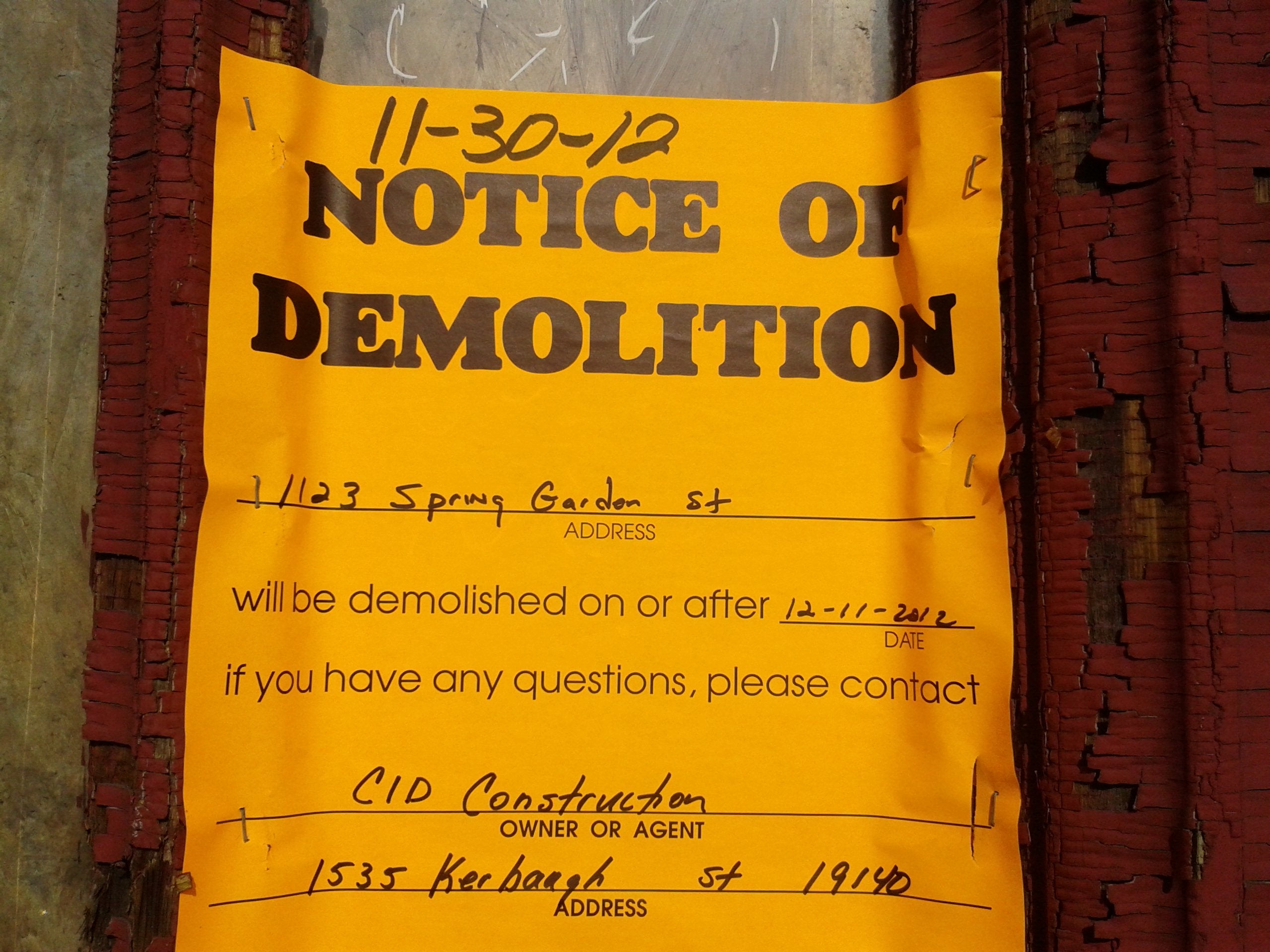Will holiday demolition herald Church of the Assumption?
In October, Court of Common Pleas Judge Idee C. Fox ruled that the Board of L&I Review was wrong to overturn the Historical Commission’s decision to grant the owners of the Church of the Assumption a permit to demolish the historic structure based on financial hardship.
In what is eerily reminiscent of the Dec. 23, 2007 demolition of the Romaldo Giurgola inspired PLICO buildings on North Broad Street, HiddenCity’s Christopher Mote now reports that a permit for demolition has been pulled in light of the judge’s decision to restablish the financial hardship scenario. The demolition notice posted on the church front door said the razing of the structure will begin on or after Dec. 11. Over the summer, Siloam sold the land, along with the Church, a rectory, convent, and school to developer John Wei for more than a million dollars.
Wei could not be reached for comment, but told PlanPhilly at the time of his purchase of the church property that he had “no idea yet” what he would do with the plot, but that he wanted to make the neighborhood happy.
The Historical Commission originally approved the demolition on the basis that the Church, on 12th and Spring Garden streets, had no market value, and that its owners, Siloam, could not make an adaptive reuse of it without an investment of between $5 million and $7 million. The Callowhill Neighborhood Association appealed that decision to the Board of L&I Review, which reversed the Commission’s decision in May, on the idea that Siloam, which helps clients with AIDS and their families, had not made enough of an effort to sell or reuse the building.
Siloam appealed the Board’s decision to the Court of Common Pleas.
“The Board’s finding that Siloam’s efforts to sell or adapt the property were inadequate were not supported by substantial evidence, and because the Board’s conclusions of law that Siloam’s efforts to sell or find an alternative use for the church did not meet the “good faith” standard were in error, the court hereby reverses the Board’s decision and reinstates the Commission’s approval of Siloam’s demolition permit application,” Judge Fox wrote in her opinion.
Fox wrote that the Historical Commission had considered evidence that the Board failed to carefully review, and that the Board relied too heavily on the testimonies of Preservation Alliance of Greater Philadelphia director John Gallery and Alexander Generalis, a real estate agent. Both witnesses were opposed to the demolition of the Church.
The judge said the evidence—Siloam’s attempts to sell the building, and a Community Design Collaborative estimate of the cost of rehab—showed that the Church is in such a poor condition that it has no value on the real estate market and cannot be adapted. She wrote that the Historical Commission’s decision to grant the permit for demolition was rightly based on that evidence, while the Board’s reversal of that decision was not.
She wrote: “The evidence clearly shows that Siloam could not afford to do anything with the Church, and [John] Gallery’s opinion that Siloam should have gone through a more formal exercise in order to support its application is therefore not evidence substantial enough to support the Board’s conclusion that Siloam’s efforts were insufficient.”
And added, “The bottom line is that the structure is at this point simply too dilapidated to be reasonably adapted for any purpose, and no individual analysis of options would have changed this.”
In October, Sarah McEneaney, president of the Callowhill Neighborhood Association, wrote in an email to PlanPhilly, “Callowhill Neighborhood Association continues to believe the Church should be preserved and adapted for reuse … The CNA Board will review the decision and meet to discuss before deciding on next steps.”
The Church of the Assumption was designed and built in 1848-49 by Patrick Charles Keely, the nation’s most prolific ecclesiastical architect of his time, and the church at 1133 Spring Garden Street is the oldest surviving Keely structure. It was consecrated by John Neumann and was the site of Katharine Drexel’s baptism. Both became Catholic saints.
The Callowhill civic group and the larger preservation community consider the distinctive church building a neighborhood landmark. It was listed on the Philadelphia Register of Historic Places in 2009.
The Callowhill Neighborhood Association has fought to preserve the church through Philadelphia Historical Commission hearings, Board of License and Inspection Review hearings, and most recently the Philadelphia Court of Common Pleas.
Contact the reporter at jaredbrey@gmail.com and follow him on Twitter @jaredbrey
WHYY is your source for fact-based, in-depth journalism and information. As a nonprofit organization, we rely on financial support from readers like you. Please give today.







